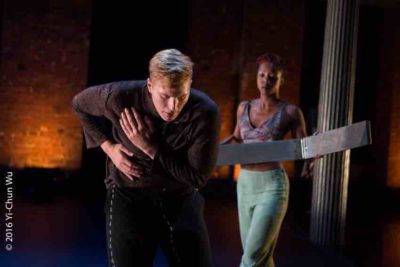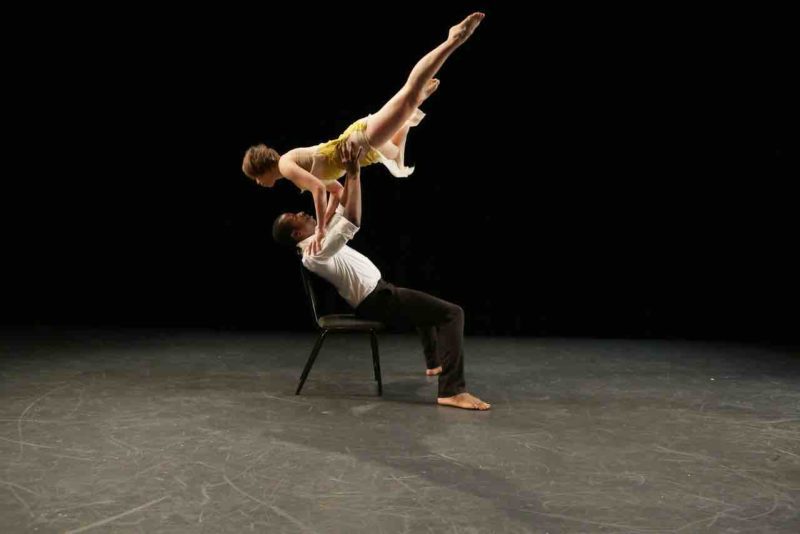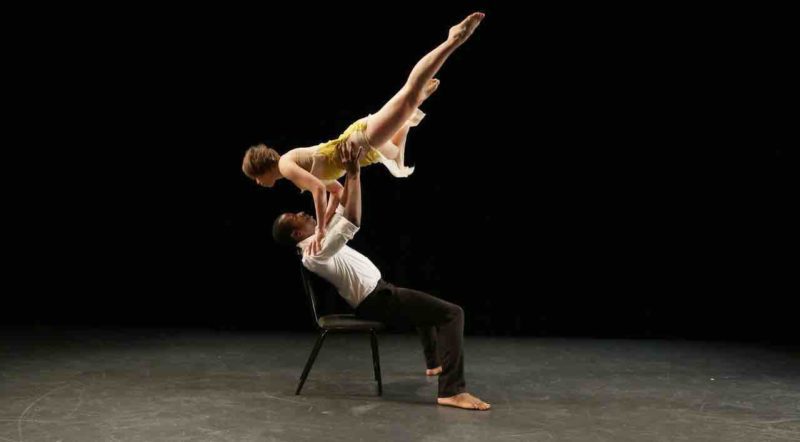INTERVIEW: Two dance companies come together for Triskelion Arts showcase

Artistic connectivity will be in the air at The Muriel Schulman Theatre at Triskelion Arts this coming weekend. On March 11 and 12, two established dance companies will share the same New York stage, offering the audience the chance to see commonalities and differences in approach, aesthetic and artistry.
BodyStories: Teresa Fellion Dance will present Agawam, while Mari Meade Dance Collective, or MMDC, will present Thresholden. Both Fellion and Meade worked separately with their own companies, and now they come together to present two parts to one showcase for Triskelion Arts.
“We were both selected by Triskelion Arts as part of their winter season, so we were individually chosen,” Meade said recently in a phone interview. “That curatorial platform put us together. I’ve actually never seen Teresa’s work except online. I look forward to seeing it for the first time in the theater this March.”
MMDC started working on Thresholden approximately one year ago, and then they presented a work-in-progress version at Lake Studios Berlin. For the New York premiere, they have added costumes, makeup and set. “It’s a world that we want the audience to enter and experience, a different atmosphere, one that you can relate to the figures and the characters, but they’re not quite human,” Meade said about the piece. “It’s fantastical. It’s textured. It’s a subliminal space. It’s a space between what humans are and what they aren’t.”
The characters in the dance are mysterious and inviting, creations that are hunched over and emit eerie feelings. “Their overlapping confrontations in an intricate web of existence are steadily revealed,” according to a press release for the show.
Meade is an accomplished choreographer. She graduated from the New Orleans Center for the Creative Arts and University of North Carolina School of the Arts. She has been an artist in residence at Chez Bushwick and Lake Studios Berlin.
BODYSTORIES
For the BodyStories portion of the night, Fellion explores a place in time and a particular setting, but she said the dance was not a period piece.
“It’s examining familial bonds of post-Depression-era, working-class, Italian-American families, and the piece is called Agawam because there’s a town with a big Italian-American population that mostly immigrated to the United States in the Depression era and the post-Depression era in western Massachusetts in the Springfield area,” Fellion said. “It’s sort of looking at that community and the hard work that they’ve put in the community that they built, and I actually have family ties myself.”
The intense bond and work ethic of these families are on display and artistically investigated, and Fellion’s company also looks into how these immigrant stories translated to later generations.
There’s also a theme of cultural appropriation. “The name of the town is obviously Native American, and then their hockey team is the Springfield Indians,” she said. “We were looking a lot at the music of that time, and one of the songs that was really popular … [and] released in 1954 and was played a lot at those hockey games is ‘Shake, Rattle and Roll’ by Bill Haley & [His] Comets. But obviously that went off the charts in 1954. But Joe Turner of … Mississippi had released that song just three months prior, and he didn’t make anything off it — so those kind of threads.”
Fellion began exploring her family’s history in a previous piece called Home, which was developed in 2015 and 2016. For that piece, she searched for this concept of “home” within the self and through self-actualization. “So Home is a piece that stands on its own, and Agawan feels like the next step in that world, although the two pieces are completely different but they’re related,” Fellion said. “We kind of took elements of Home and then changed it.”
Fellion also hopes the dance piece will offer commentary on these immigration stories connect to the current times. “With all of the attacks on immigration and different issues that immigrants today are facing in our country, I just feel like it’s an important time for us all to reflect on our own heritages and our own family’s ancestry and immigration process, so that we can all relate to each other,” she said. “I feel that’s something that we all share as Americans, whether it’s now or in the past.”

FOUNDATION
Meade founded MMDC in 2009. She had recently moved to New York City and had a fellowship with the Lincoln Center Institute, now called Lincoln Center Education. At the end of the fellowship, she had the chance to present a work on anthropological research. She gathered seven dancers and worked with a musician to create a “really great performance.”
“So after that I decided to just keep going, so the company now consists of nine dancers, an art director and myself,” she said. “Three of those dancers have actually been with me since the beginning in 2009, and even the newest member has been with us over two years. We rehearse year-round, and we rehearse all of the time. So we’re not a project-based company, and so it’s really a familial feeling. And I think that we’re always exploring and searching no matter what is coming up next.”
Fellion’s first work with her company was in 2004 when she was graduating from The Ailey School. Soon after, she was actually hired by the rock band Phish to choreograph for their concerts.
“So I was like, OK, our company has to have a name,” Fellion said. “Myself and a bunch of my friends from Ailey, we stayed together for a couple of years in performances and different things, and then I realized, OK, I’m interested in going into the concert dance world a little bit more. … I also wanted to go deeper into my creative practice, so I felt like I could lead the process in a way, that I had a deeper understanding of the works. So I took a step back and went to an MFA program at Sarah Lawrence from 2009 to 2011, and so it felt like the company officially started in late 2011 when I came back to the city. And we say that we formed in 2011, but it’s been in process with myself as an independent choreographer for quite some time. It’s just been a very interesting trajectory.”
Fellion added this about her dancers: “We’ve had dancers stay with the company as long as six years, and some stay for a year or two. I enjoy the exchange of some new energy and some people that stay for a long time, and I think over time, it has become quite like a family.”
SIMILAR AESTHETIC
Although Agawam and Thresholden were developed separately, Meade said she believes the two choreographers have a similar aesthetic. She is excited for audience members who normally take in MMDC shows to enjoy a BodyStories piece, and vice versa.
“We both have these really long research processes inside and outside the studio, which is unique to dance, too,” Meade said. “There’s so much other influence. It’s not just a purely movement base. It’s physical. It’s emotional. It’s intellectual. We’re both trying to reach audiences in all three of those capacities. Yeah, I’m really excited to be sharing a bill with BodyStories.”
Fellion found direction and inspiration in the name of their joint program. Triskelion Arts is presenting the performances — including an 8 p.m. show Saturday, March 11 and 4 p.m. and 8 p.m. shows Sunday, March 12 — as a split bill series. Instead, they both fall under the banner of Triskelion Arts, and they were curated together for a reason.
“I really do think they curate companies that will mesh well together because they present as an evening,” Fellion said. “Even when Mari and I were designing our promotional materials, and she had her drawing that she was describing mixed with our photo from Agawam, I really was drawn to it because of her description of it being the unseen people. Or sometimes they might not even feel like people, but these ignored beings, the way they are represented in the movements and in the drawing, it feels like that. It’s very abstracted. You see faces, but they’re sort of mutated to have that sense of what she was describing, and in my picture, it’s very real. It’s in someone’s basement, and it’s these dancers’ bodies. … So I feel like our forms of abstraction and Mari’s forms are going to combine well.”
By John Soltes / Publisher / John@HollywoodSoapbox.com
Triskelion Arts presents MMDC & BodyStories: Teresa Fellion Dance — A Shared Evening of New Work at The Muriel Schulman Theatre at Triskelion Arts in Brooklyn. The performances take place March 11 and 12. Click here for more information and tickets.

